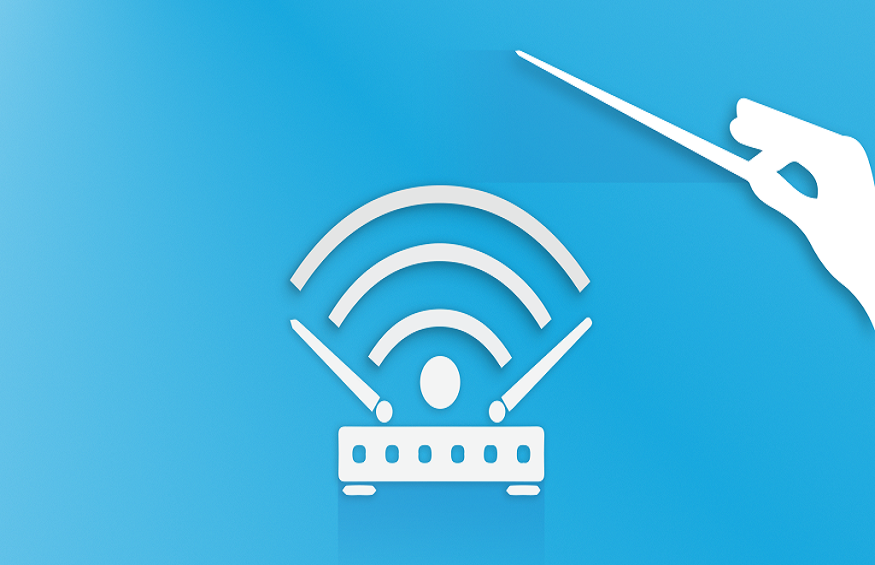Mesh Wi-Fi and Wi-Fi 6 are two of the most notable technologies driving wireless connectivity forward. Despite what the title of this article may suggest, the two technologies are not mutually exclusive. Many systems use both Mesh Wi-Fi and Wi-Fi 6.
This article compares the two technologies in terms of which is better at improving Wi-Fi speed, coverage, and stability. We explain how these technologies work, how exactly they increase speed and coverage, and which of the two improves the internet experience more meaningfully in homes.
Here’s a brief exploration of how Mesh Wi-Fi and Wi-Fi 6 routers work.
How Mesh Wi-Fi Works
A mesh Wi-Fi is a network of multiple Wi-Fi routers that are placed at different parts of the house. Let’s understand how this network of routers or “nodes” improves speed and coverage with an analogy.
When you install lighting in a room, you want to light it as evenly as possible. If you place one big light source in the center, it’ll make the center of the room too bright while leaving the corners dark. It’ll also create shadows behind objects. Instead, what you do is place multiple light sources all over the room. This lights the room more evenly. Multiple lights also reduce dark shadows as other lights can reach areas where one can’t.
A conventional Wi-Fi router in the center of the house is like a big light source in the center of a room. It creates unnecessarily strong signals close to itself which die down at the edges if you have a big house. Different objects and materials in your house can also block Wi-Fi signals, creating dead spots behind them.
A mesh Wi-Fi network provides more even coverage throughout the home. Dead spots of one node are covered by other nodes, so you get reliable connections everywhere. All the nodes form a single network. Your devices automatically switch from one node to another as you move around, so you’re always connected to the router sending the strongest signals.
Note that Mesh Wi-Fi is separate from Wi-Fi boosters that create a new network that only repeats signals from the main router. Your devices don’t automatically switch to the main router when you’re closer to it or vice versa.
How Wi-Fi 6 Works
Wi-Fi 6 is the latest generation of Wi-Fi technology. It features several improvements toWi-Fi 5 which increase the speed, range, and stability of Wi-Fi connections.
One notable Wi-Fi 6 technology is Orthogonal Frequency-Division Multiple Access (OFDMA). Wi-Fi sends units of data called data packets to connected devices. In previous Wi-Fi technologies, each data packet could only deliver data to one device. So a router would send data packets to multiple devices one by one as they waited for their turn. OFDMA allows data for multiple devices to travel via the same packet, improving speeds and lowering wait time for all connected devices.
Wi-Fi 6 also increases speed and range with improved beamforming. Instead of broadcasting signals symmetrically in all directions, beamforming allows routers to focus their signals in the direction of connected devices. This allows the signal to reach farther at greater strength without consuming more power.
Wi-Fi 6 also features other improvements such as increased bandwidth, Overlapping Basic Service Sets (OBSS), and WAP 3. However, you need devices that support Wi-Fi 6 to get all the benefits of a Wi-Fi 6 router.
Mesh Wi-Fi vs. Wi-Fi 6: Head-To-Head Comparison
Both Mesh Wi-Fi and Wi-Fi 6 technologies are a significant stepup from conventional Wi-Fi systems, but which of these technologies does it better? Let’s see in this head-to-head comparison.
Coverage and Dead Spots
Wi-Fi 6 can improve range with more efficient beamforming, but it can still leave dead spots. Some objects and materials may not allow Wi-Fi signals to pass no matter how strong they are. So if you have a big two-story house and your current router had dead spots, aWi-Fi 6 router may not do much to help.
Mesh Wi-Fi uses multiple access points to improve coverage and reduce blind spots. If you have weaker signals in a room, just place a node close to it and your problems are gone.
Verdict: Mesh Wi-Fi has better coverage.
Power Consumption
Improved beamforming significantly reduces power consumption in Wi-Fi routers. Instead of emitting powerful signals in all directions, beamforming sends focused signals in the direction of connected devices. This significantly improves the power efficiency of Wi-Fi 6 routers compared to conventional routers with the same range.
Mesh Wi-Fi improves coverage by using multiple access points. These nodes don’t have to be very strong as they have a limited area to cover. A Wi-Fi mesh network can provide better coverage while using less power than a conventional router.
Verdict: Mesh Wi-Fi and Wi-Fi 6 both improve power consumption.
Ease of Adoption
Mesh Wi-Fi systems can use Wi-Fi 5, Wi-Fi 6, and Wi-Fi 6E technologies. So you can benefit from a mesh Wi-Fi system even if your devices don’t support Wi-Fi 6.
Verdict: Mesh Wi-Fi is easier to adopt.
The Bottom-Line
A new router will only improve internet speeds if your ISP offers high speeds. Grande Internet is one of the fastest internet services you can get in Texas. Grande also partners with eero to bring you the eero Mesh Wi-Fi system at discounted rates. Call an authorized reseller at 844-381-0817 to learn more.

